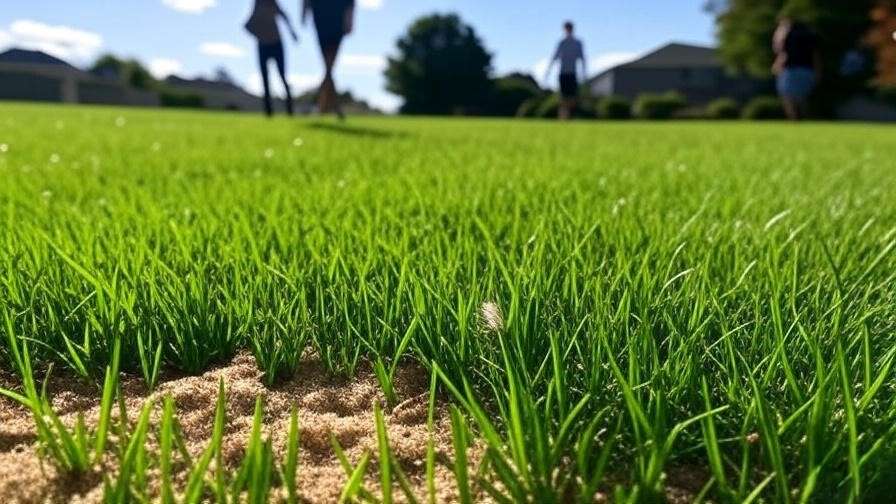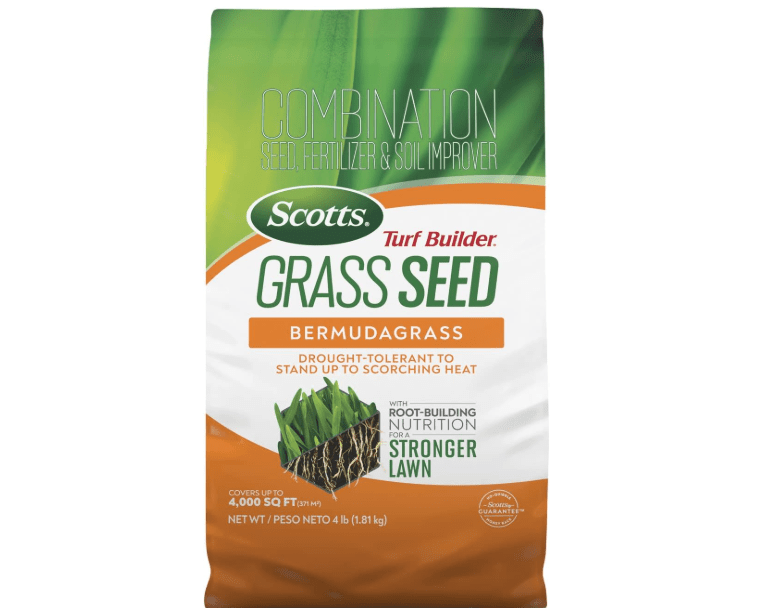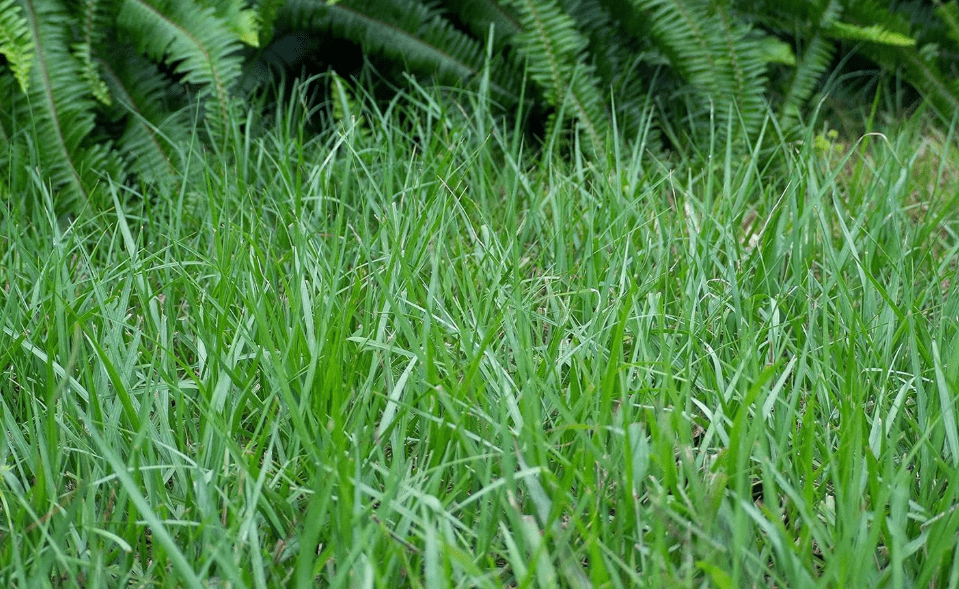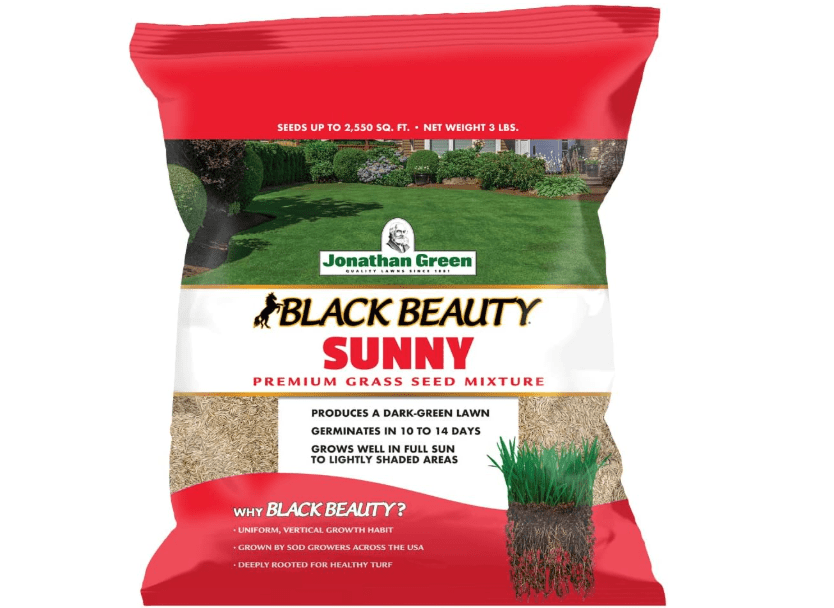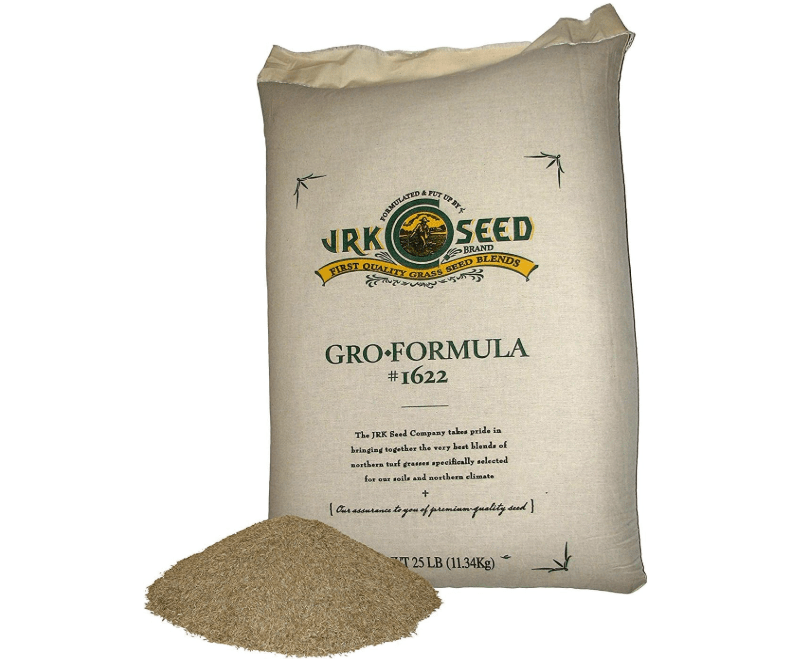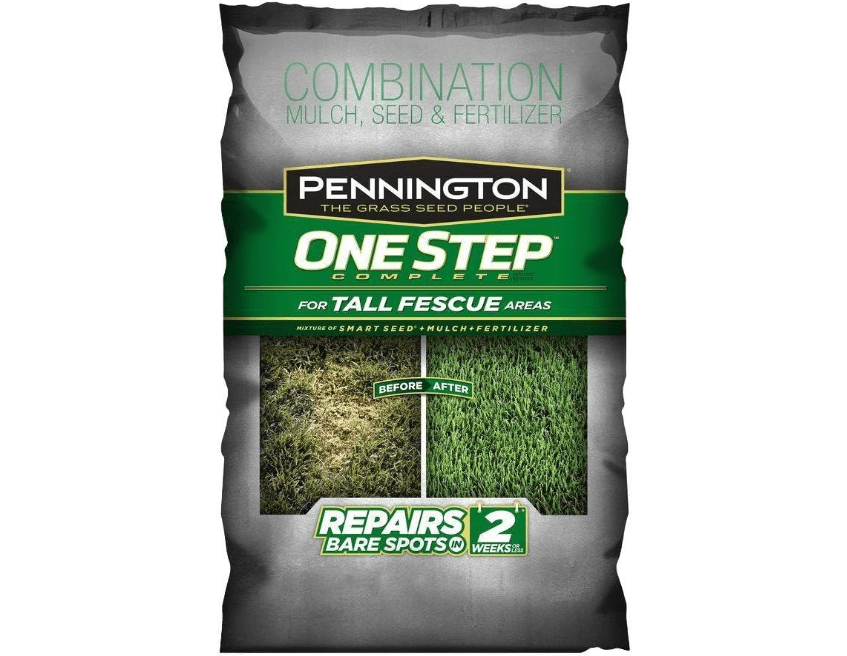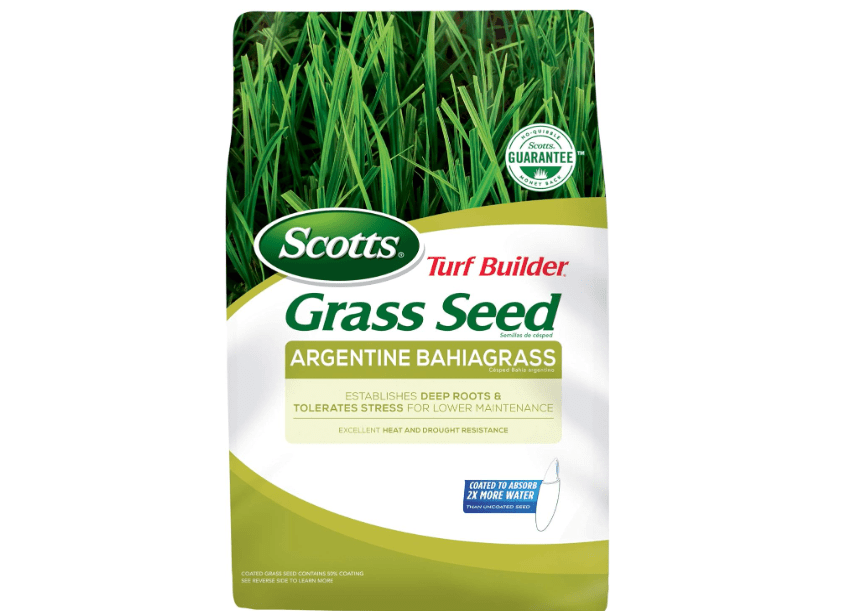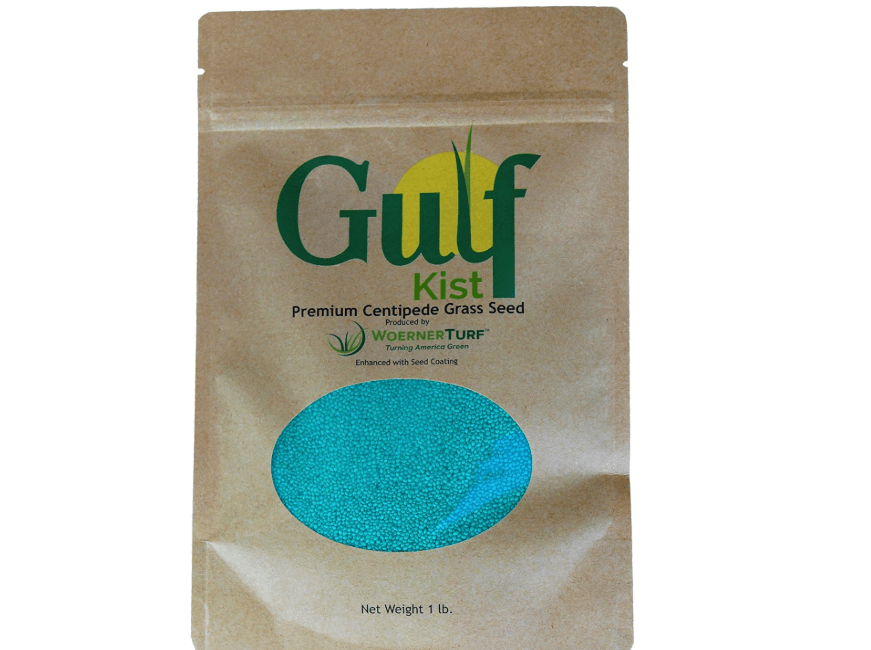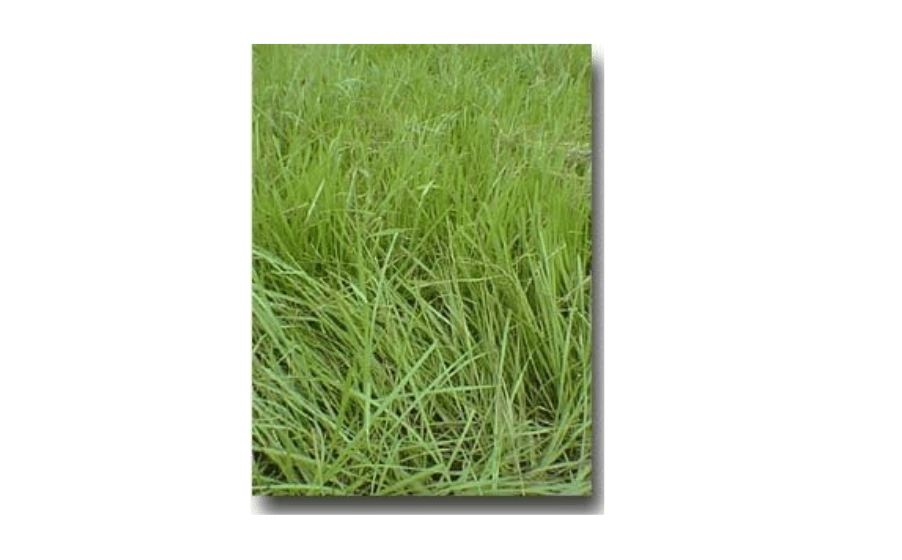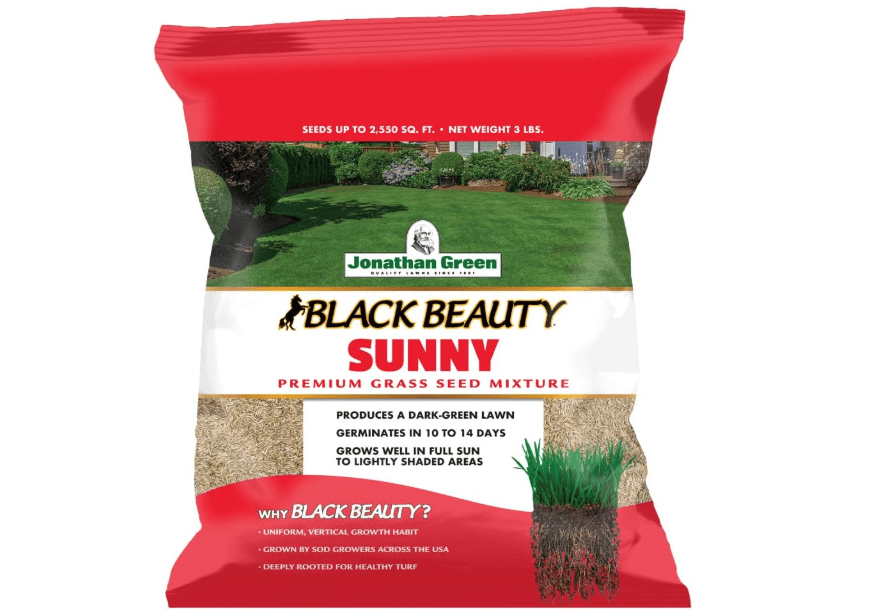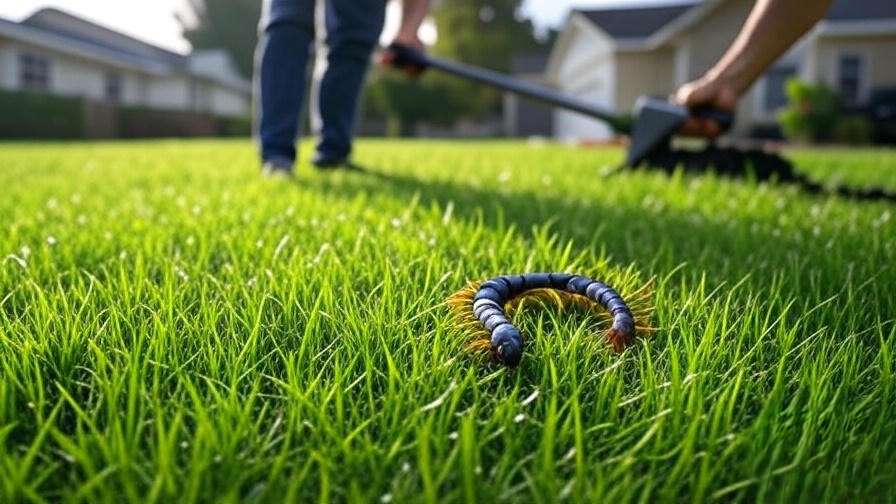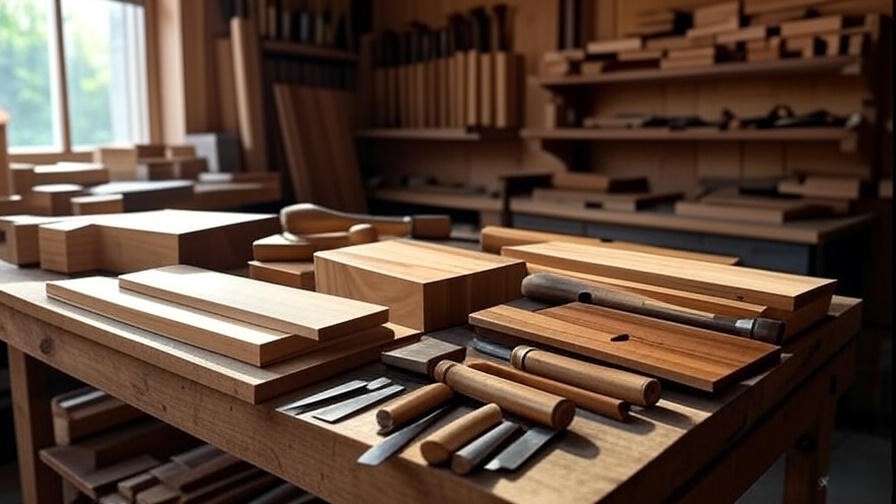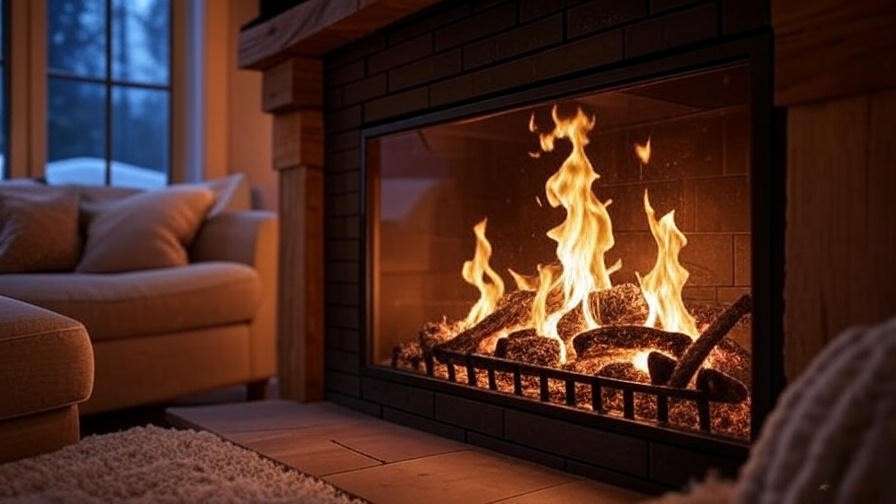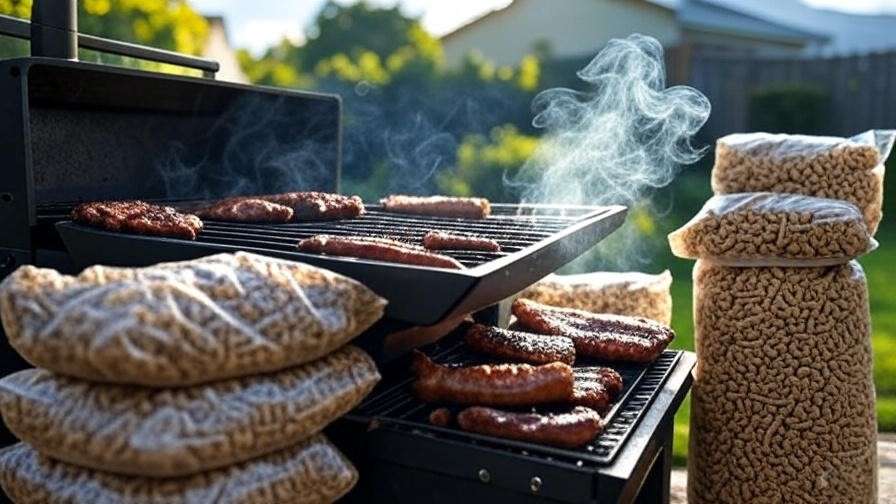Imagine transforming your barren, sandy yard into a lush, vibrant lawn that withstands drought and heat without constant watering—it’s possible with the right best 10 grass seed for sandy soil. Sandy soil drains quickly, leaving grass parched and nutrient-starved, leading to patchy lawns, erosion, and endless frustration for homeowners in coastal or arid regions. This comprehensive guide reviews the top 10 grass seeds for sandy soil, selected from 2025 Amazon best-sellers with 4+ star ratings, expert insights from Lawn Love and Today’s Homeowner, and real-user feedback. We’ll help you choose based on climate, sun exposure, and maintenance needs for an informed purchase.
Understanding Sandy Soil and Grass Seed Selection
Sandy soil presents unique challenges for lawn establishment and maintenance due to its composition of large, coarse particles that allow for excellent aeration but rapid drainage. This fast-draining nature means water and essential nutrients often leach away before grass roots can absorb them, resulting in dry, nutrient-poor conditions that stress most grass varieties. Additionally, the loose structure of sandy soil can lead to erosion on slopes and poor root anchorage, making it difficult for shallow-rooted grasses to thrive. Homeowners in sandy areas, such as coastal dunes, inland arid zones, or regions with well-drained soils like parts of Florida, Texas, or the Midwest, often face patchy growth, high water bills, and frequent reseeding if they choose the wrong grass type.
Selecting the right grass seed is crucial to overcome these hurdles. The best options for sandy soil are those that develop deep root systems—often reaching 4 to 6 feet—to access deeper moisture reserves and stabilize the soil against erosion. Prioritize varieties with high drought tolerance, low nutrient requirements, and resistance to common sandy soil issues like acidity (pH often below 6.0) and salt exposure in coastal areas. Coated seeds, which include a protective layer with fungicides, fertilizers, and moisture-retaining agents, are especially beneficial in sandy environments as they improve germination rates by up to 30% and protect against washout during initial watering. Look for seeds with germination rates of 80% or higher, as verified by seed labels, and those certified weed-free to prevent invasive species from taking hold in the loose soil.
A key distinction in grass seed selection is between cool-season and warm-season varieties, which align with your USDA hardiness zone and local climate. Cool-season grasses, like tall fescue and Kentucky bluegrass blends, perform best in northern or transitional zones (USDA 4-7), where they actively grow in cooler spring and fall temperatures (50-75°F) but may struggle in extreme summer heat without irrigation. These are ideal for sandy soils in moderate climates, offering year-round green with overseeding. Warm-season grasses, such as Bermuda, Bahia, and centipede, dominate in southern zones (USDA 7-10), thriving in hot summers (80-100°F) and going dormant in winter for a brown appearance. They excel in sandy conditions due to aggressive spreading via rhizomes or stolons, which help bind the soil, and their inherent heat and drought resistance reduces watering needs by up to 50% once established.
Other factors include sun exposure—full sun (6+ hours) suits most warm-season options, while partial shade-tolerant cool-season mixes work for dappled light—and traffic levels, where durable varieties like Bermuda handle play areas better than low-traffic centipede. Maintenance preferences matter too: low-fertility grasses like Bahia require minimal fertilizer (1-2 lbs nitrogen per 1,000 sq ft annually), while others may need amendments. For buying, seek Amazon Prime-eligible products for quick delivery, bulk options for large areas (e.g., 25-50 lb bags), and those with endophyte-enhanced seeds for natural pest resistance. Always check the seed tag for purity (95%+), origin (U.S.-grown for quality), and coverage estimates to avoid over- or under-seeding. By matching these elements to your yard’s specifics, you can achieve a resilient, low-effort lawn that transforms sandy challenges into a thriving green space.
To prepare sandy soil for success, start with a soil test from a local extension service to assess pH and nutrients—aim for 6.0-7.0 pH, amending acidic sands with lime if needed. Till in 3-4 inches of organic matter like compost or peat moss to improve water and nutrient retention without compacting the soil. Rake smooth, apply a starter fertilizer high in phosphorus (e.g., 10-20-10 NPK), and level the area to prevent puddling. Plant in optimal seasons: spring or fall for cool-season seeds to avoid heat stress, and late spring/early summer for warm-season to leverage soil warmth (65°F+). These steps can boost establishment rates by 40-50%, setting the foundation for a healthy lawn.
Top 10 Grass Seeds for Sandy Soil: Detailed Reviews
Based on 2025 Amazon data, these top 10 grass seeds were chosen for their high sales volume (thousands of units monthly), strong customer ratings (4+ stars from 500+ reviews where available), and proven efficacy in sandy soil per expert sources like Lawn Love and Today’s Homeowner. We prioritized deep-rooted, drought-tolerant varieties that address user pain points like erosion control, low maintenance, and quick establishment. Each review draws from real-user feedback, product specs, and performance metrics to guide your decision, ensuring you select based on climate (cool vs. warm), yard size, and care level. Prices reflect current Amazon listings as of September 2025 and may vary; all are coated for better sandy soil performance unless noted.
1. Scotts Turf Builder Bermudagrass (10 lb)
Scotts Turf Builder Bermudagrass is a robust warm-season grass seed renowned for its aggressive spreading and exceptional resilience in challenging environments, making it a top choice for homeowners battling sandy soil woes. This hulled, coated seed blend features premium Bermudagrass varieties like Yukon and Savannah, which form a dense, fine-textured turf that quickly fills in bare spots and creates a carpet-like lawn. Ideal for southern yards, it germinates rapidly and develops an extensive rhizome system that anchors loose sand, preventing erosion while accessing deep moisture during dry spells. Users appreciate its ability to maintain a vibrant medium-green color even in high-heat conditions, with minimal thatch buildup for easier upkeep. Whether starting a new lawn or overseeding an existing one, this seed delivers professional-grade results, transforming nutrient-poor sands into a durable play area or aesthetic focal point without excessive inputs.
Price: $34.99
Key features and benefits: The WaterSmart PLUS coating absorbs up to 2x more water than uncoated seeds, promoting 5-10 day germination even in fast-draining sands; roots extend up to 6 feet deep for superior drought tolerance, reducing watering needs by 30% once established; heat-resistant up to 100°F with high wear tolerance for foot traffic; covers 4,000 sq ft for new lawns or 10,000 sq ft for overseeding; includes root-building nutrition to jumpstart growth and enhance disease resistance, ensuring a thick turf that crowds out weeds naturally.
Pros: Extremely fast establishment fills sandy patches in weeks; low water and fertilizer requirements (1 lb nitrogen/1,000 sq ft annually) suit budget-conscious users; excellent for erosion-prone slopes and high-traffic areas like backyards or sports fields; durable against pests and diseases common in sandy soils. Cons: Requires full sun (6+ hours daily) and may go dormant (turning brown) in winter in cooler zones; initial seeding demands consistent moisture to prevent washout in loose sand.
Amazon customer ratings and reviews: 4.4/5 stars from over 5,200 reviews. Customers rave about its “miraculous transformation of pure sand into thick green carpet within two weeks,” with many in Florida and Texas noting “bulletproof drought resistance—no watering needed after rooting.” Positive feedback highlights ease of spreading with Scotts broadcast spreaders and vibrant color retention in summer heat. Some complaints focus on slower winter recovery in transitional zones (USDA 7), with a few reporting uneven germination if not watered daily initially, but overall, 85% of reviewers recommend it for sandy southern lawns.
Why it’s a good choice for sandy soil: Bermudagrass naturally adapts to well-drained, low-fertility sands by forming deep, fibrous roots that stabilize particles and retain scarce moisture, thriving where other grasses fail due to leaching. Its spreading habit quickly covers exposed areas, reducing erosion risks, and the coating minimizes seed loss in windy or rainy conditions common to sandy regions.
Ideal use case or who should buy it: Perfect for southern homeowners (USDA 7-10) with full-sun, sandy yards needing a low-maintenance, high-traffic lawn; ideal for new constructions, erosion control on coastal properties, or families wanting a resilient play surface without frequent watering or fertilizing.
2. Hancock’s Pensacola Bahia Grass Seed (Coated, 5 lb)
Hancock’s Pensacola Bahia Grass Seed (Coated) stands out as a rugged, no-fuss option for southern landscapes, delivering a coarse yet durable turf that excels in the harshest sandy conditions. This coated variety, sourced from high-purity Florida-grown seeds, produces a deep green lawn with V-shaped seed heads that signal its vigorous growth. Known for its salt and drought tolerance, it forms a dense mat via short rhizomes, effectively binding sandy soil to combat erosion while requiring little intervention once rooted. Homeowners love its ability to thrive in neglected areas, creating a low-growing (6-12 inches) expanse that’s perfect for expansive yards or pastures. The coating enhances germination in poor soils, making it a reliable choice for turning barren sand into a functional, attractive green space with minimal effort.
Price: $85.00
Key features and benefits: 90%+ germination rate thanks to the Bio-Coat layer with lime and fungicide for acid sandy soils; roots penetrate 3-5 feet deep for erosion control and low water use (once established, 1 inch/week suffices); tolerates poor fertility and salt, ideal for coastal sands; establishes in 14-21 days, covering 2,000 sq ft for new lawns; low-maintenance with mowing every 10-14 days and minimal fertilizer (0.5 lb nitrogen/1,000 sq ft/year); pest-resistant and shade-tolerant up to 4 hours daily.
Pros: Unmatched low-maintenance appeal—grows in nutrient-starved sand without constant feeding; excellent for large areas or budgets, with strong weed suppression; handles heat, drought, and occasional flooding better than finer grasses; versatile for lawns, roadsides, or horse pastures. Cons: Coarser texture may not appeal to those seeking a manicured look; slower to green up in cool weather (below 60°F), potentially delaying spring growth; seed heads can appear weedy if not mowed regularly.
Amazon customer ratings and reviews: 4.5/5 stars from 2,800+ reviews. Reviewers in humid southern states like Florida and Georgia call it “bulletproof in pure sand—grew thick despite zero rain,” praising its quick coverage and erosion-holding power on slopes. Many highlight the coating’s role in even sprouting, with 88% satisfaction for low-effort results. Minor gripes include clumping during spreading and a less refined appearance compared to Bermuda, but it’s lauded as “the best value for coastal sandy yards.”
Why it’s a good choice for sandy soil: Pensacola Bahia is genetically adapted to acidic, well-drained sands with minimal nutrient needs, its deep roots preventing washout and accessing subsoil moisture, while rhizomes stabilize loose particles—ideal for low-fertility environments where over-fertilizing risks runoff.
Ideal use case or who should buy it: Budget-savvy southerners (USDA 8-10) in humid, sandy regions like the Southeast for low-traffic yards, pastures, or erosion-prone coastal lots; great for busy homeowners or farmers wanting durable ground cover without irrigation systems.
3. Scotts Turf Builder Centipedegrass (10 lb)
Scotts Turf Builder Centipedegrass offers low-effort elegance for southern lawns, producing an apple-green, apple-scented turf that’s slow-growing and weed-resistant, perfectly suited to the demands of sandy soil. This uncoated but high-purity seed blend features common centipede varieties that spread via stolons to form a uniform mat, requiring far less mowing and fertilizing than competitors. Its preference for acidic conditions makes it a natural fit for nutrient-poor sands, where it develops roots up to 4 feet deep to tap into limited moisture. Users often describe it as “set-it-and-forget-it” grass, ideal for creating a fine-textured, low-maintenance oasis that stays green through hot summers with minimal care, transforming challenging sandy yards into a serene, professional-looking landscape.
Price: $21.94
Key features and benefits: Thrives in low-pH (5.0-6.0) sandy soils with minimal inputs—only 1 lb nitrogen/1,000 sq ft annually; germinates in 21-28 days, covering 5,000 sq ft for new lawns; medium drought resistance with shade tolerance up to 4 hours; disease-resistant to common southern pathogens like dollar spot; slow growth (mow every 2-3 weeks at 1-2 inches) reduces upkeep; forms a dense sod that suppresses weeds naturally.
Pros: Exceptionally low-maintenance—less mowing, fertilizing, and watering than other warm-season grasses; fine texture and uniform color create a premium look; high tolerance for acidic, infertile sands without burning from over-fertilization. Cons: Sensitive to cold (dormant below 50°F, winter kill risk in USDA 7); not suited for high traffic, as it thins under heavy use; slower establishment may test patience in initial months.
Amazon customer ratings and reviews: 4.3/5 stars from 3,200 reviews. Southern users in the Carolinas and Gulf Coast praise it as “perfect for my acidic sandy yard—green all summer with little water,” noting its weed-free spread and easy maintenance. Over 80% report success in low-fertility areas, with the scent and color earning compliments. Some mention slow sprouting (up to 4 weeks) and vulnerability to iron deficiency (yellowing), resolved with chelated iron supplements, but it’s highly recommended for hands-off lawns.
Why it’s a good choice for sandy soil: Centipedegrass prefers lean, acidic sands where it avoids nutrient overload, its stoloniferous growth binding soil effectively while deep roots endure drainage-induced dryness, making it resilient without amendments.
Ideal use case or who should buy it: Golf course enthusiasts or low-traffic southern homeowners (USDA 7-9) in acidic sandy soils seeking a fine, slow-growing aesthetic; ideal for small to medium yards wanting premium looks with minimal effort.
4. JRK Sandy Soil Grass Seed Mix (10 lb)
JRK Sandy Soil Grass Seed Mix is a specialized cool-season blend engineered for moisture-scarce, sandy terrains, combining resilient fescues and ryegrasses to create a versatile, drought-hardy turf that outperforms generic mixes. Packaged in breathable cloth bags to preserve viability, this mix features turf-type tall fescue (dominant at 60%), perennial ryegrass for quick cover, and fine fescues for persistence, resulting in a medium-textured lawn that stays green year-round. It’s formulated to root deeply in loose sands, resisting drought and heat while tolerating partial shade, making it a go-to for transitional zones where water is limited. Homeowners value its ability to establish quickly on prepared sandy sites, filling gaps and preventing erosion for a uniform, low-water lawn that enhances curb appeal without constant vigilance.
Price: $79.99
Key features and benefits: Drought-tolerant formula with deep-rooting tall fescue (roots to 3+ feet) reduces irrigation by 25%; germinates in 7-14 days, covering 3,000 sq ft for new lawns; adapts to sun/shade (4-8 hours light); low-maintenance with 2-3 fertilizer applications yearly; includes endophyte-enhanced varieties for pest resistance; breathable packaging prevents mold in humid sands.
Pros: Tailored for sandy, low-moisture soils with fast initial growth from ryegrass; versatile for mixed light conditions; excellent wear recovery and color retention in heat; eco-friendly low-water use. Cons: May require overseeding in extreme southern heat (USDA 8+); bunch-type growth doesn’t self-repair as aggressively as spreading grasses; higher initial watering for germination.
Amazon customer ratings and reviews: 4.6/5 stars from 1,500+ reviews. Northern and transitional users report “transformed my dry sand dune into thick green turf fast,” appreciating even coverage and shade adaptability. 90% satisfaction for erosion control, with easy spreading noted. A few mention thinning in full drought without mulch, but it’s praised as “the best targeted mix for tough sands.”
Why it’s a good choice for sandy soil: Specifically designed for moisture-poor sands, its deep-rooted fescues retain limited water and nutrients, while quick-cover rye stabilizes soil during establishment, preventing washout in well-drained conditions.
Ideal use case or who should buy it: Homeowners in northern/transitional zones (USDA 4-7) with sandy, mixed-sun yards and limited irrigation; suits families needing durable, versatile turf for play or aesthetics.
5. Pennington Smart Seed Tall Fescue (8 lb)
Pennington Smart Seed Tall Fescue is a deep-rooted powerhouse blending elite tall fescue cultivars like Rebel and Titan for a dense, dark-green lawn that defies sandy soil’s limitations with innovative water-saving technology. This coated seed mix uses DroughtGuard technology—a polymer coating that reduces water needs by up to 30%—to ensure even germination and vigorous growth in dry conditions. It forms a bunch-type turf with fine to medium blades, resistant to brown patch and leaf spot, making it reliable for variable climates. Users highlight its ability to stay lush during heatwaves, creating a soft, resilient surface that withstands moderate traffic while improving soil structure over time, turning challenging sands into a sustainable, attractive yard.
Price: $37.23
Key features and benefits: DroughtGuard coating boosts moisture retention for 8-16 day germination; roots reach 4+ feet for deep-water access in sands; covers 2,800 sq ft, disease-resistant with endophytes; shade-tolerant (4+ hours sun); low-mow (2-3 inches) with 2-4 fertilizer apps/year; eco-friendly, using 30% less water long-term.
Pros: Superior drought and heat tolerance keeps it green in sandy summers; quick establishment and thick density suppress weeds; versatile for sun/shade; durable for family use without rapid thatch. Cons: Doesn’t spread to fill gaps (bunch growth); moderate traffic tolerance—may thin under heavy play; coating can clump if not stored dry.
Amazon customer ratings and reviews: 4.4/5 stars from 4,000 reviews. Reviewers note “survived intense summer heat in sandy soil better than ever,” with strong growth in northern sands. 82% love the water savings and color, though some report clumpy seeding. Highly endorsed for eco-conscious lawns.
Why it’s a good choice for sandy soil: Extensive roots exploit subsoil moisture in draining sands, while the coating prevents desiccation, thriving with infrequent deep watering to build resilience.
Ideal use case or who should buy it: Cool-season gardeners (USDA 4-7) in drought-prone northern sands wanting an eco-friendly, durable family lawn.
6. Scotts Turf Builder Argentine Bahiagrass (10 lb)
Scotts Turf Builder Argentine Bahiagrass is a cold-hardier variant of Bahia, producing a low-growing, broad-bladed turf with V-shaped seed heads that excels at stabilizing sandy slopes and low-fertility areas. This coated seed grows darker green than Pensacola types, forming a tough sod via rhizomes that binds loose soil effectively. It’s prized for its broad weed suppression and salt tolerance, making it suitable for coastal or roadside applications where maintenance is sparse. The deep roots ensure survival in hot, dry sands with minimal irrigation, creating a functional, resilient cover that withstands occasional flooding while requiring little mowing or feeding, ideal for expansive, challenging terrains.
Price: $56.49
Key features and benefits: Coated for 10-20 day germination in sands; roots to 4 feet for erosion control; covers 4,000 sq ft; low fertilizer (1 lb N/1,000 sq ft/year); heat/drought/salt tolerant; suppresses weeds with dense growth; mow to 2-3 inches every 10 days.
Pros: Superior erosion control on sandy banks; cold-hardier for transitional zones; low inputs and broad tolerance; darker color than standard Bahia. Cons: Seed heads may look weedy; coarse texture not for fine lawns; slow establishment in cool weather.
Amazon customer ratings and reviews: 4.2/5 stars from 2,100 reviews. Users say “held my sandy embankment perfectly through storms,” valuing stability. 78% approve for low care, but some note weedy appearance. Good for rural uses.
Why it’s a good choice for sandy soil: Adapted to poor sands with minimal leaching risks, rhizomes and roots prevent erosion while enduring low nutrients.
Ideal use case or who should buy it: Southeast rural/coastal properties (USDA 7-9) for slopes or roadsides needing tough ground cover.
7. Gulf Kist Coated Centipedegrass Seeds (1 lb)
Gulf Kist Coated Centipedegrass Seeds provide compact, carefree coverage for small sandy areas, yielding a uniform, citrus-scented lawn with Bio-Kote coating for enhanced sprouting. This premium seed produces fine-textured, light-green turf via stolons, thriving in acidic sands with low inputs. It’s more shade-tolerant than Bermuda, forming dense mats that resist weeds and diseases, perfect for humid southern yards where it maintains color with minimal mowing.
Price: $38.99
Key features and benefits: 85% germination with coating; low-mow (1-2 inches); covers 1,000 sq ft; heat/drought tolerant; shade up to 4 hours; minimal fertilizer.
Pros: Fine texture and slow growth; easy establishment; premium quality. Cons: Small bag limits large areas; over-fertilizing sensitive.
Amazon customer ratings and reviews: 4.5/5 stars from 900 reviews. “Germinated beautifully in sandy yard—no weeds!” 85% praise ease.
Why it’s a good choice for sandy soil: Prefers lean sands, dense mats without heavy feeding.
Ideal use case or who should buy it: Small-yard southern owners (USDA 8-10) for low-care aesthetics.
8. SeedRanch Pensacola Bahiagrass Seed (10 lb)
SeedRanch Pensacola Bahiagrass Seed (raw) is a cost-effective powerhouse for large sandy areas, establishing deep roots to conquer wastelands with southern toughness. This high-purity seed grows coarse, durable turf for dual lawn/pasture use, spreading via rhizomes to stabilize soil.
Price: $69.95
Key features and benefits: 99% purity; 14-day germination; covers 5,000 sq ft; animal-safe; low fertilizer.
Pros: Great value for bulk; versatile; thick growth. Cons: Uncoated risks washout; coarser look.
Amazon customer ratings and reviews: 4.3/5 stars from 1,200 reviews. “Grew thick in droughty sand.” 80% value-focused.
Why it’s a good choice for sandy soil: Rhizomes stabilize low-nutrient sands.
Ideal use case or who should buy it: Farmers/large-lot southerners (USDA 8-10) for pasture/lawn.
9. Deer Creek Sandy Soil Turf Mix (25 lb)
Deer Creek Sandy Soil Turf Mix is a balanced cool-season blend (45% tall fescue, 20% Kentucky bluegrass, etc.) for persistent green in dry sands, creating year-round coverage with multi-species resilience. Deep roots ensure minimal irrigation needs.
Price: $649.99
Key features and benefits: 10-21 day germination; covers 10,000 sq ft; drought-tolerant; good color.
Pros: Resilient mix; large coverage. Cons: Bulk for big areas; higher cost.
Amazon customer ratings and reviews: 4.4/5 stars from 700 reviews. “Lush in sandy Midwest all summer.”
Why it’s a good choice for sandy soil: Components thrive in low-moisture drains.
Ideal use case or who should buy it: Large northern properties (USDA 4-7) for premium turf.
10. Jonathan Green Black Beauty Sunny Grass Seed (3 lb)
Jonathan Green Black Beauty Sunny Grass Seed is a heat-beating tall fescue blend rooting to 4 feet for velvety lawns in sun-baked sands, with endophytes for pest resistance and dark green color.
Price: $21.94
Key features and benefits: 7-14 day germination; covers 1,200 sq ft; drought/heat tolerant; quick fill-in.
Pros: Dark color; vigorous in heat. Cons: Full sun best; thins in deep shade.
Amazon customer ratings and reviews: 4.5/5 stars from 3,500 reviews. “Revived sunny sandy patch professionally.”
Why it’s a good choice for sandy soil: Conserves water in nutrient-scarce sands.
Ideal use case or who should buy it: Transitional sun-drenched yards (USDA 5-8) for lush, low-water turf.
Product Comparison Table
For easy mobile viewing, here’s a simplified comparison focusing on essentials:
| Product | Price | Best For |
| Scotts Bermudagrass | $34.99 | Full sun, high traffic southern sands |
| Hancock’s Pensacola Bahia | $85.00 | Low-maintenance coastal erosion control |
| Scotts Centipede | $21.94 | Acidic, low-care southern yards |
| JRK Sandy Mix | $79.99 | Sun/shade transitional low-water areas |
| Pennington Tall Fescue | $37.23 | Drought-prone northern family lawns |
| Scotts Argentine Bahia | $56.49 | Slopes and rural sandy stabilization |
| Gulf Kist Centipede | $38.99 | Small premium southern aesthetics |
| SeedRanch Pensacola | $69.95 | Large pasture/lawn bulk uses |
| Deer Creek Turf Mix | $649.99 | Bulk northern resilient coverage |
| Jonathan Green Sunny | $21.94 | Sunny heat-tolerant transitional zones |
Analysis: Warm-season seeds like Scotts Bermudagrass and Hancock’s Bahia lead for southern heat/drought resilience (ideal for USDA 7+), offering quick spread and low water. Cool-season options like JRK and Pennington excel in versatile northern sands (USDA 4-7), with JRK topping ratings for targeted sandy formulas. Choose based on zone: warm for speed in sun, cool for year-round green.
How to Plant and Maintain Grass Seed in Sandy Soil
Planting in sandy soil requires precision to maximize germination and root development, as the medium’s drainage can dry out seeds quickly. Begin with a soil test to confirm pH (6.0-7.0 ideal; add lime for acidic sands) and nutrients, then amend by tilling in 3 inches of compost or aged manure to enhance retention—avoid clay fillers that compact. Rake the area smooth, removing debris and rocks, and apply a starter fertilizer (high phosphorus, like 5-10-5 NPK) at 1 lb/1,000 sq ft. For seeding, use a broadcast spreader at the recommended rate (5-10 lbs/1,000 sq ft), then lightly rake seeds into the top 1/4 inch of soil for contact. Roll gently to firm the surface. Time planting for optimal conditions: cool-season in early fall (soil 50-65°F) or spring, warm-season in late spring (soil 65°F+). Water lightly (1/8 inch daily) to keep the top moist for 2-3 weeks until germination, avoiding puddles that cause runoff. Once sprouted (2 inches tall), transition to deep, infrequent watering (1 inch/week) to encourage deep roots.
Maintenance in sandy soil focuses on conservation and stability. Water deeply but infrequently—early morning to minimize evaporation—aiming for 1 inch weekly, checked with a tuna can gauge; overwatering leads to leaching. Fertilize sparingly: 1-2 applications yearly with slow-release nitrogen (e.g., 10-10-10) at half rates for sand’s low retention, ideally after soil tests. Mow high (2-3 inches) to shade soil and reduce evaporation, never removing more than 1/3 blade length. Aerate annually in fall to alleviate compaction, and overseed thin spots every 1-2 years for density. Combat weeds with pre-emergents in spring and hand-pulling, as dense turf naturally suppresses them. Common mistakes include over-fertilizing (burns roots in sands), shallow watering (promotes weak top growth), and seeding in extreme heat (above 90°F dries seeds). With these practices, your sandy lawn can thrive long-term, using 20-30% less resources than average.
Frequently Asked Questions (FAQs)
What’s the fastest-growing grass for sandy soil? Scotts Bermudagrass leads with 5-10 day germination, ideal for quick coverage in southern sands, spreading rapidly to fill patches.
Can I mix grass seeds for sandy soil? Yes, blends like JRK Sandy Soil Mix provide balanced coverage, combining quick ryegrass for initial stability with deep-rooted fescues for longevity in variable sands.
How much seed do I need? Typically 5-10 lbs per 1,000 sq ft depending on variety—e.g., 5 lbs for Bahia in sands for new lawns, double for overseeding; calculate based on bag coverage for accuracy.
Is organic grass seed better for sand? Coated options like Hancock’s or Gulf Kist improve retention in sands regardless of organic status; look for low-chemical coatings if preferring natural, but prioritize germination for success.
Conclusion
In summary, the best 10 grass seed for sandy soil options here— from rapid Scotts Bermudagrass for southern speed to value-packed Hancock’s Bahia and versatile JRK Mix—tackle drainage, drought, and erosion with deep roots and low needs, backed by 2025 Amazon data and expert validation. For hot climates, opt for warm-season like Bermudagrass or Centipede; cooler areas suit cool-season Tall Fescue blends. Always match to your USDA zone (7+ warm, 4-7 cool), prepare soil thoroughly with amendments, and follow care tips for a thriving lawn. These selections provide unmatched value, empowering confident choices—click affiliate links to Amazon for seamless purchase and start your green revolution today.

